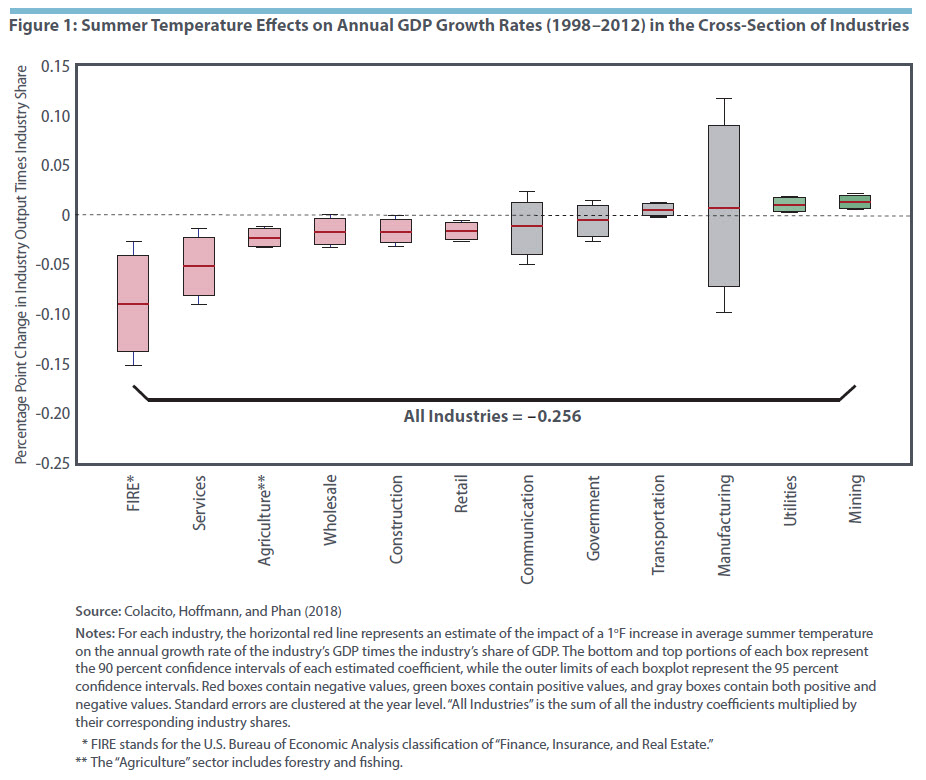Thursday, August 9, 2018
The Impact of Higher Temperatures on Economic Growth
From Federal Reserve Bank of Richmond:
“June 2018 was the third-warmest on average across the contiguous forty-eight states since record keeping began in 1895, according to the National Oceanic and Atmospheric Administration (NOAA). Only 1933 and 2016 saw hotter starts to the summer.
Climate scientists project that average global temperatures will rise over the coming decades, which could have a variety of environmental impacts. But what impact would higher temperatures have on the economy? To date, studies of this question have largely focused on developing countries, under the assumption that those countries are more exposed to the effects of higher temperatures. The economy in developing countries is often more reliant on agriculture or other outdoor activities, and those countries have fewer resources to devote to mitigating the effects of heat through technologies such as air conditioning. Indeed, researchers have found that higher temperatures have significant negative effects on the economic growth of developing nations.1
In the case of developed countries, such as the United States, researchers have focused largely on measuring the impact of warming on outdoor economic activities, such as agriculture.2 Since these sectors make up a relatively small share of the U.S. economy, it has generally been assumed that the economic effects of global warming for the United States would be relatively small. As Nobel prize winning economist Thomas Schelling observed in a 1992 article, “Today very little of our gross domestic product is produced outdoors, susceptible to climate.”3
However, research by three authors of this Economic Brief (Colacito, Hoffmann, and Phan) finds that the consequences of higher temperatures on the U.S. economy may be more widespread than previously thought. By examining changes in temperature by season and across states, they find evidence that rising temperatures could reduce overall growth of U.S. economic output by as much as one-third by 2100.”4
Continue reading here.
Posted by at 9:55 AM
Labels: Energy & Climate Change
Subscribe to: Posts
